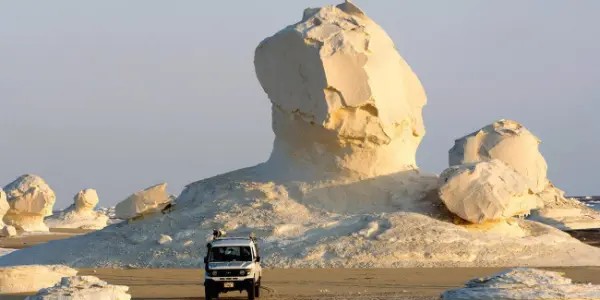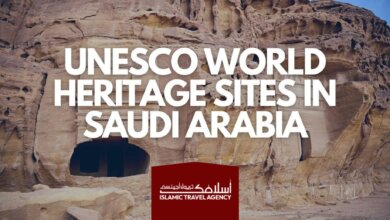Exploring the Wonders of White Oasis Egypt
Plan Your Adventure and Experience Egypt’s Most Surreal Desert Landscape

Deep in the Western Desert of Egypt lies one of the country’s most surreal and otherworldly landscapes — the White Oasis Egypt. Known for its stark white rock formations, vast open spaces, and an atmosphere that feels almost alien, this natural wonder has long fascinated geologists, adventurers, and photographers alike. Whether you are drawn by its unique geology, its silence, or its role in Egypt’s desert heritage, the White Oasis offers an experience unlike any other.
A Landscape Sculpted by Nature
The name “White Oasis” comes from the dazzling chalk and limestone formations that dominate the landscape. Over millions of years, wind and sand have shaped these soft rocks into fantastical shapes — some resembling animals, others like giant mushrooms or abstract sculptures. The whiteness is most striking under the midday sun, when the desert floor seems to glow, but at sunrise and sunset, the formations take on a golden or rosy hue, creating breathtaking views.
These unusual shapes are not just visually captivating; they tell a geological story. The area was once submerged under an ancient sea, and the chalk deposits are the remnants of marine life from that era. This combination of geological history and natural artistry has made the White Oasis one of the most distinctive desert destinations in Egypt.
The Location and Surroundings
The White Oasis Egypt lies in the Farafra Depression, part of the country’s vast Western Desert. It is often visited alongside the nearby Black Desert, Crystal Mountain, and other notable desert landmarks. The contrast between the white chalk landscapes and the darker volcanic rocks of the Black Desert makes for a striking journey through different geological eras within a short distance.
The nearest settlement is Farafra, a small and peaceful oasis town where visitors can find basic accommodations, supplies, and local hospitality. Farafra’s inhabitants, mostly Bedouins, have preserved their traditions for generations, offering visitors a glimpse into a lifestyle deeply connected to the desert environment.
Climate and Best Time to Visit
Like most desert regions, the White Oasis experiences extreme temperatures. Summers can be very hot, with daytime temperatures often exceeding 40°C (104°F), while winter days are mild and nights can be surprisingly cold.
The ideal months to explore are from October to April, when the days are cooler and more pleasant for outdoor activities. The cooler months also bring clearer skies, making them ideal for night-time stargazing — one of the highlights of camping in the White Oasis. With little to no light pollution, the stars appear incredibly vivid against the dark desert sky.
Activities and Experiences
Desert Camping
Many visitors choose to camp overnight in the White Oasis, surrounded by its silent, sculpted terrain. Camping here is a sensory experience — the stillness of the desert, the cool breeze at night, and the feeling of waking up to a sunrise that paints the white rocks in soft shades of pink and gold.
Photography
The unique formations make the White Oasis a dream location for photographers. Each formation offers a different perspective depending on the light and time of day, making it a place where you could spend hours without running out of scenes to capture.
Guided Desert Tours
Most trips to the White Oasis Egypt are arranged through local guides who provide 4×4 vehicles, camping gear, and knowledge of the area’s best spots. These guides not only navigate the challenging terrain but also share stories and cultural insights about the desert.
Stargazing
With minimal interference from artificial light, the night sky in the White Oasis is a spectacle. The Milky Way, constellations, and even occasional meteor showers are visible in remarkable clarity.
Cultural and Historical Context
While the White Oasis is primarily known for its geological wonders, it is also part of a region rich in human history. The Western Desert has been home to nomadic tribes for centuries, and its oases have served as rest stops for caravans crossing the vast expanse. Petroglyphs and archaeological remains found in nearby areas suggest human presence here for thousands of years.
In modern times, the oasis towns, including Farafra, continue to balance tradition with the needs of visitors. Local crafts, such as pottery and wool products, reflect the creativity and resourcefulness of the desert’s inhabitants.
Responsible Travel Considerations
The delicate chalk formations and the fragile desert ecosystem mean that conservation is essential. Visitors are encouraged to follow “leave no trace” principles — avoid climbing on formations, carry out all waste, and respect wildlife. Supporting local guides and businesses not only enriches your experience but also helps sustain the community and its environment.
The Egyptian government and local authorities have taken steps to protect parts of the White Oasis and surrounding areas, recognizing their value as both natural heritage and a draw for sustainable tourism.
Planning Your Visit
- Access: The most common starting point is from Cairo, with journeys often including stops in Bahariya Oasis before reaching the White Oasis. The trip typically requires a 4×4 vehicle.
- Permits: Some areas may require permission from local authorities, so it’s advisable to arrange tours through licensed operators.
- What to Pack: Bring sun protection, layered clothing for varying temperatures, plenty of water, and a camera to capture the scenery.
- Safety: Travel with experienced guides, as navigating the desert requires knowledge of the terrain and conditions.
Why the White Oasis Captivates Visitors
The White Oasis Egypt is more than just a beautiful landscape — it is a place where geology, history, and solitude converge. Visitors often describe feeling a deep sense of peace here, surrounded by nature’s sculptures and the endless horizon. It is a destination that invites reflection, appreciation, and a deeper connection to the natural world.
From the whispering winds that shape its rocks to the stars that illuminate its nights, the White Oasis remains one of Egypt’s most unforgettable natural wonders. For those seeking to step beyond the Nile and the ancient monuments, it offers a completely different, yet equally mesmerizing, side of Egypt.




